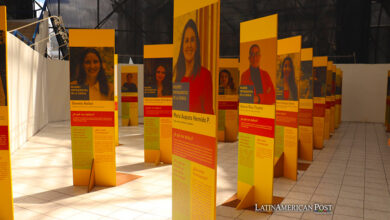Female Nobel Prize Winners, Still Far From Gender Equality
Since its first edition in 1901, female winners are only a small percentage despite the fact that their participation increases every year.

Counting from 1901 to 2000, a total of 30 Nobel prizes were awarded to women across the categories Physics, Chemistry, Medicine, Peace, and Literature. Photo: Piotrus
LatinAmerican Post | Yolanda González Madrid
Listen to this article
Leer en español: Mujeres Premios Nobel siguen estando lejos de la igualdad de género
Female Nobel Prize Winners are on the rise in Literature and Peace, but absent in Physics and Chemistry.
Recognizing individuals or institutions that have carried out notable research, discoveries, or contributions to humanity is the premise on which Nobel Prizes are awarded. Although it is a practice that involves a great effort on the part of its nominees, female participation in the scientific field has not been highly valued over the years, thus demonstrating that these awards have not achieved gender equality. This is where we ask ourselves, is there deliberate discrimination? Or do women really still have few opportunities in the field?
Counting from 1901 to 2000, a total of 30 Nobel prizes were awarded to women across the categories of Physics, Chemistry, Medicine, Peace, and Literature. In other words, less than 5% were recognized for their different jobs. In fact, in the last century, it was difficult for women to have access to higher education and even to carry out scientific research, a scenario that began to change around the new millennium. Even so, the number of women in science remains low despite having greater participation today.
For its part, from 2001 to 2021 there has been a notable increase in the awarding of the Nobel Prize with 29 awards, adding the two received by Elinor Ostrom (2009) and Esther Duflo (2019) to the Economics category. But let's not be fooled by this mirage, since the number of female laureates is still low and this is also partly due to the fact that the percentage of nominees does not exceed 10%, as Göran Hansson, secretary-general of the Royal Academy, told the BBC of the Sciences of Sweden.
“Obviously we are concerned that there are so few female laureates. Less than 10% of the nominations for the Nobel Prize in Physics and Chemistry are for women scientists. We don't take nominations in proportion because we consider each one. But we cannot reward someone who has not been nominated, ”says Hansson. In addition, it also points out that the imbalance comes from the same women on the committee, who tend to elect men more.
A minority even in Nobel committees
To get a better idea of how Nobel prizes are awarded, each category has its own committee. Switzerland and Norway are the countries in charge of this award and according to themselves they are proud of their reputation as defenders of gender equality. However, a great detail that does not go unnoticed is that even the women of the different committees are still a minority. The reason? The sparse female presence in the disciplines.
Despite this, the outlook looks increasingly encouraging, as the proportion of women continues to increase over the years. "It is clear that the situation improves progressively, but slowly," acknowledges Hansson. It is also worth mentioning that the committees do not have the last word to choose the winners, but they do have the power to choose the nominees.
The Nobel: statistics and Latin American women
To date, a total of 58 women have been recognized with a Nobel award. It should be noted that 27 of them have had to share the recognition with another person, which also means dividing the economic prize. Likewise, 2009 was the year where more females (5) were awarded, a record that was close to being reached in 2018 and 2020 with four representatives. On the other hand, Marie Curie is the only woman to win two Nobel Prizes, one for Physics in 1903 and one for Chemistry in 1911, a milestone that she shares with three men.
Among the categories with the most winners stands out Peace with 18 (versus 92 men), with Bertha von Suttner being the first winner in 1905 and María Ressa the most recent one in 2021. Another close category is that of Literature with 16 winners (vs 102), including Selma Lagerlöf in 1909 and Louise Glück in 2020. These numbers are high if we compare them with what happens in the scientific field.
You may also be interested: Will A European Union Be Possible In Latin America?
Many claim that "mathematics is not for girls", and therefore women are less incentivized to participate in these areas. In fact, Eva Olsson, the only woman on the Physics committee, acknowledges that "role models are important to inspire more young students ." Precisely, Physics and Chemistry are the categories with the greatest inequality, having only 4 (vs 214) and 7 (vs 179) winners respectively. When adding both figures they would be even below Medicine, which has 12 winners (vs 212).
Finally, we cannot ignore the two Latin American representatives. In 1945, Chilean Gabriela Mistral was recognized with the Nobel Prize for Literature for her lyrical poetry, which, according to the organization itself, served as inspiration for Latin American ideals. Almost 50 years later, in 1992 precisely, the Guatemalan Rigoberta Menchú Tum received the award for her work in favor of social justice and respect for indigenous rights.
In short, the number of Nobel laureates follows an upward trend, but it is still far from gender parity, something that also happens in other areas. For now, and to continue building a better future, our work will continue to be to encourage the little ones and let them know that they can go as far as they want.




